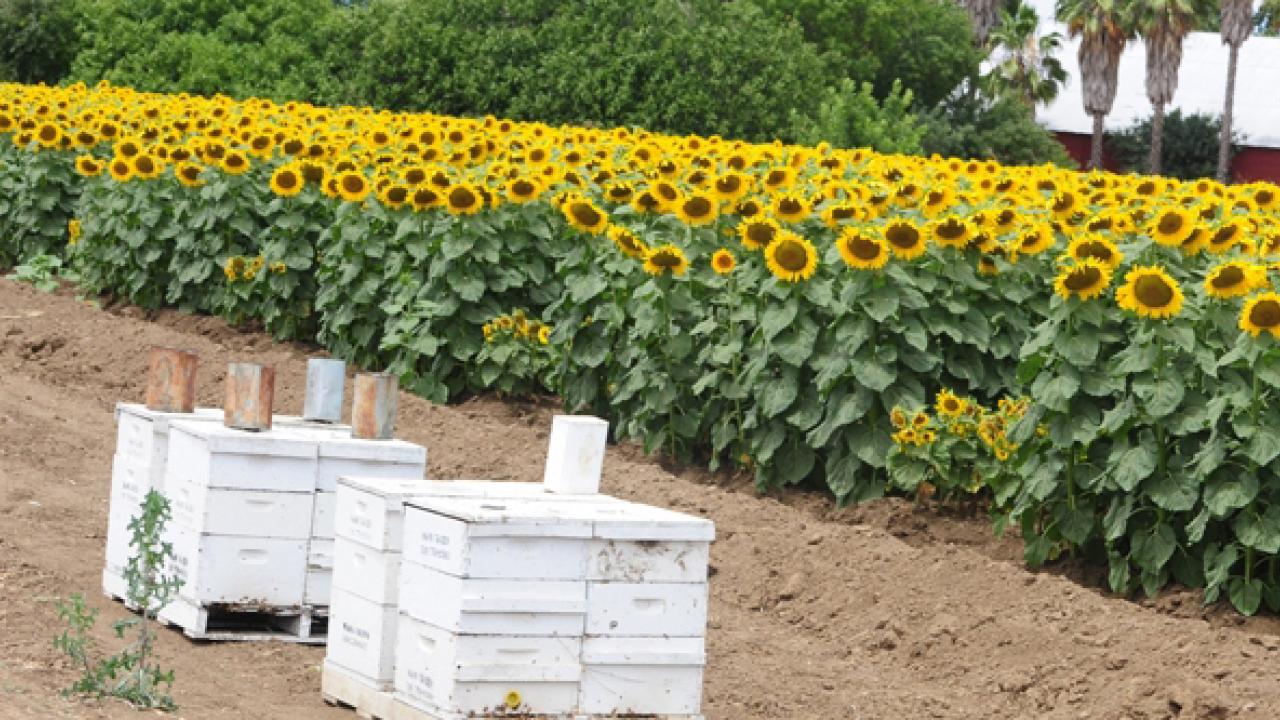
Flowers of the Sun
Sunflowers, like endorphins, make us happy.
It is sunflower season here in Yolo County, California, home to the Honey and Pollination Center. Huge swaths of sunflowers are in bloom all over the county. Along major highways, town edges and along wiggly two lane roads. More and more folks are getting into their cars driving out to see the sunflowers, and feeling happy.
We understand that not everyone that reads this newsletter is in Northern California and maybe, just maybe your sunflowers haven’t bloomed yet – but they will. And when they do, you too will feel happy.
Sunflowers produce a huge amount of pollen and nectar making so many of our pollinators very happy, too. Pollen from sunflowers has been found to boost the immune systems of bumbles bees and honey bees against debilitating pathogens1 . The decline in health among our honey bees is well known and documented. However there is growing interest concerning the decline in our native bee population and how that will affect our ecological balance. So, when we find out what makes us happy also makes various bees happy. . . we can all be happy together.
And, while you are admiring the flowers, you might notice a bee that looks quite a bit like a honey bee – but not quite. This little lady nicknamed the sunflower bee, is actually called a long-horned bee, because of her longer antennae. She’s a solitary little girl who makes her nest in the ground.
A trip to visit sunflower fields is a must. But pay attention. Fields of sunflowers, often with loads of beehives around them, are an agricultural crop. In northern California, most varieties are grown for seed. They are also grown for oil, cut flowers and for their hulled seeds to eat.
Here are some suggestions for your trip to the sunflowers:
- Respect the area: The fields are private property. Stay on the road and don’t wander in fields causing possible damage
- Respect the bees: You will notice the bees going about their work collecting nectar for honey and pollen for protein. They don’t want to be disturbed.
- Know what to look for: Sunflowers are planted in alternating rows of female plants with single large flowers and smaller male plants with multiple flowers. See if you can spot the difference.
- Remember, Sunflowers follow the sun facing east each morning and gradually turning west.
A note about Sunflower honey:
There are many kinds of sunflowers and each produces nectar that bees turn into honey. Occasionally you will see a single source Sunflower Honey, though not very often. It usually gets blended into whatever the bees collect throughout the summer months. If you can find Sunflower from confectionary sunflowers – those with seeds we love to eat, you will have a rich, dark honey with a buttery flavor and a smooth mouthfeel.
Enjoy the sunflowers as soon as you can. Their golden yellow glory is short lived!
- 11Giacomini, J.J., Leslie, J., Tarpy, D.R. etal. Medicinal value of sunflower pollen against bee pathogens. Sci Rep 8, 14394 (2018).
